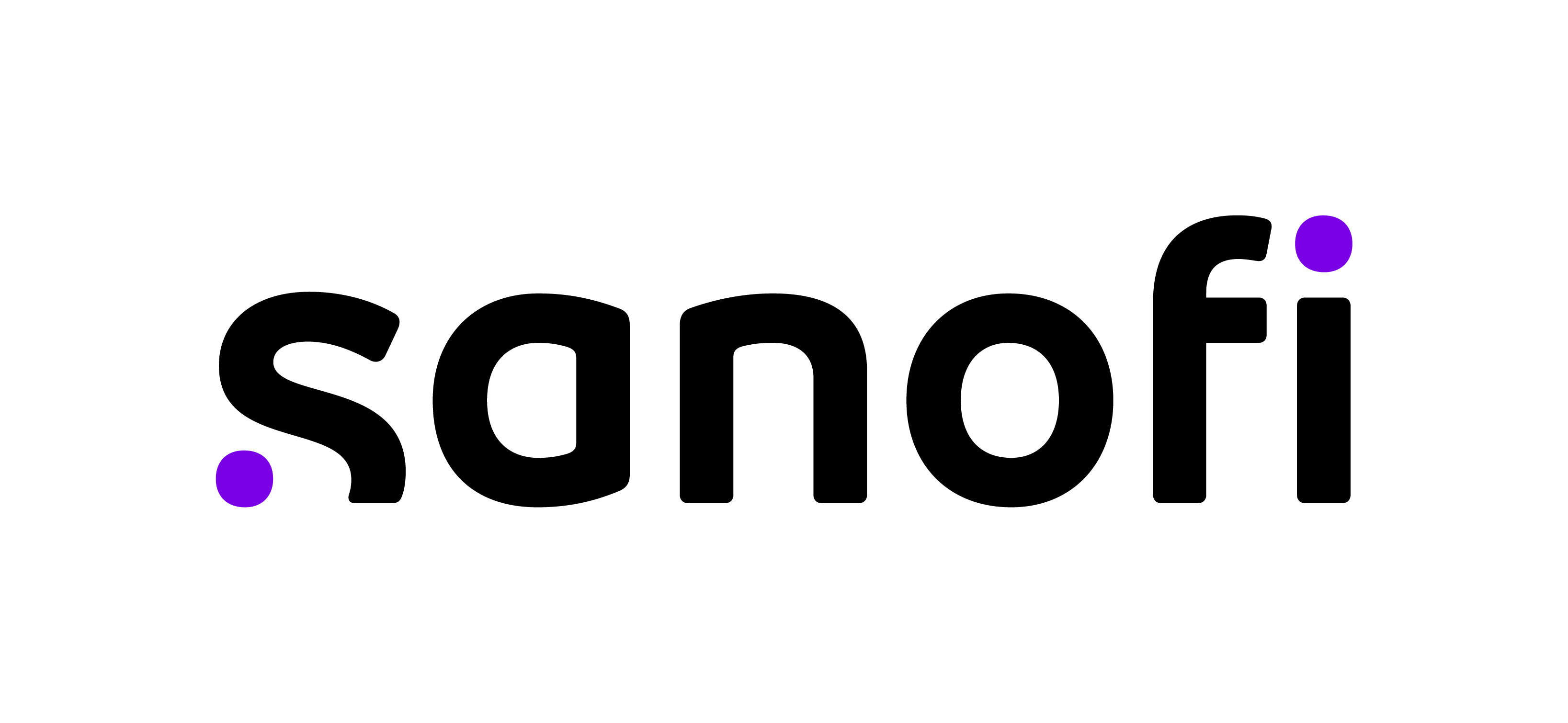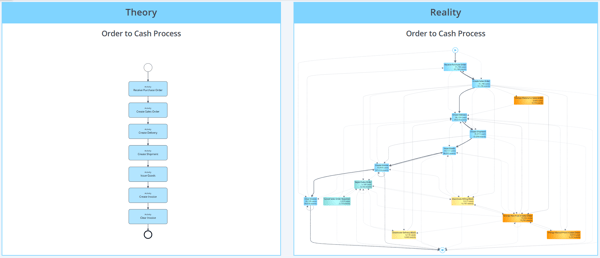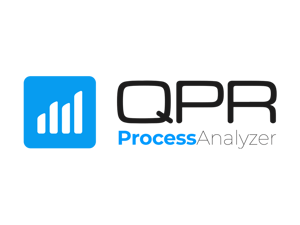
How Sanofi reduced global HR case duration by 87%
Sanofi streamlined their internal job change process with QPR ProcessAnalyzer
At Sanofi, changing jobs internally used to take over a month on average. (Most job changes took about 8 days, but some dragged on much longer.) Sanofi’s Process Intelligence team used QPR ProcessAnalyzer to redesign the job change process. Now most changes are done in a day, and they’ve also eliminated 30,000 late payments every month.

The Challenge:
Data related to job change processes was scattered across several HR systems with no unified view. The process involved multiple steps and several people, causing unnecessary delays and inefficiencies. The average job change took 33 days, while the median was just 8 — showing that a few exceptional cases significantly affected overall performance.
The Solution:
QPR ProcessAnalyzer brought all systems together into one dashboard and helped redesign processes based on what employees actually needed.
The Results:
Median job change time: 87% reduction (7.8 days → 1 day)
Average job change time: 80% reduction (33 days → 6.5 days)
Process simplified from 6 steps to 2 steps
30,000 fewer late payments every month
“Process mining is going to tell you exactly where the problem is. This gives management, process owners, and business analysts a lot of information that they never had in the past. Now, the information is right at their fingertips."
Nikolay Goldovich
Process and Automation CoE at Sanofi
About Sanofi
Sanofi is a Fortune Global 500 pharmaceutical company focused on improving human health. With 93,000 employees in 90 countries, Sanofi operates 21 research sites creating medicines, running clinical trials, and developing vaccines.

The challenge
Managing 93,000 employees across 11 disconnected systems
Global operations created data silos and process blind spots
Sanofi faced the classic challenge of success at global scale. With 93,000 employees across 90 countries, even simple internal processes became incredibly complex. Their data was scattered across 11 different SAP systems, making it impossible to see the complete picture of how processes actually worked versus how they were designed to work.
Sanofi’s internal job change process was overly complex and slow
One critical process highlighted their challenges: when an employee wanted to change jobs internally, it required 6 different steps involving 8 different people. The process typically took 8 days to complete, but extreme cases dragged on for 33 days, leaving employees frustrated and waiting.
Problems were known, but never proven with data
Sanofi already knew that certain parts of their processes weren’t working well — like delays, inefficiencies, or inconsistencies — but they had no concrete data or metrics to clearly show where and why those problems were happening.
"Some of the challenges we were facing were already known, but they were never visualized in KPIs and numbers," explains Christian Mueller, Head of Process Intelligence.
Without quantified data, getting stakeholder alignment on improvements was nearly impossible. Problems remained invisible and unactionable, hidden within the complexity of their 11 disconnected systems.
The solution
Creating a digital twin of the job change process with QPR ProcessAnalyzer
With the help of QPR ProcessAnalyzer, a process mining tool that turns system data like SAP logs into clear visual maps, Sanofi was able to see where their job change process was getting stuck and redesign it based on real insights.

QPR’s four-step methodology
1. Creating a digital twin
The transformation began with a virtual "digital twin" of the job change process to uncover unknown insights and validate known pain points. This analysis phase revealed the stark difference between their designed processes and operational reality.
2. Using data to align stakeholders
Next, they used concrete data to highlight improvement opportunities and formed steering committees with experts from across the value chain. Having numbers instead of opinions changed everything about how stakeholders engaged with process improvement discussions.
3. Adopting a user-centric approach
In the third phase, lean tools were used to interview end users and understand their real needs and difficulties when executing job changes. This ensured that solutions would work in practice—not just on paper.
4. Implementing and validating the new process
Finally, the redesigned process was rolled out with comprehensive training and post-implementation checks, ensuring the improvements were sustained and successful over time.
Discovering what was really happening
"We set out to discover the truth about our processes," says Christian Mueller. "We wanted to see how our designed processes actually worked in reality, rather than relying on what we thought was happening."
When they could finally see everything clearly, they found specific problems:
- Process bottlenecks that created unnecessary delays
- Cases going into loops and getting stuck
- Country-specific configurations causing lead time issues
- Approval steps that consistently created problems
- Too many data fields employees had to fill out

“QPR contains great functionalities to support the process mining exercise: from the visualization of the process, the KPIs, and the focus on the variations and bottlenecks, to the conformance to the model, the system offers a full end to end support approach to streamline processes.”
Christine Van Heertum
Head of Employee and External Life Cycle & Solutions at Sanofi
The result
One dashboard delivers dramatic time and cost savings
Bringing 11 SAP systems together
QPR ProcessAnalyzer solved Sanofi's biggest challenge: it took information from all 11 separate SAP systems and put it on one easy-to-use dashboard. For the first time, they could see their complete operation in one place instead of trying to piece together fragments from different systems.
Job changes are now completed on time
The biggest tangible result achieved through this initiative was the improvement in the on-time completion rate of job change processes. Before the changes, Sanofi couldn't get job changes done on time or done right. But with the new streamlined process and clear step-by-step guidance, job changes now consistently finish on schedule and without errors.
Global HR process median case duration reduced by 87%
The transformation delivered dramatic time reductions that exceeded all expectations:- Median job change time: 87% reduction (7.8 days → 1 day)
- Average job change time: 80% reduction (33 days → 6.5 days)
From 6 steps to 2 steps
The new lean process design cut the number of steps in the job change process from 6 steps down to just 2. This dramatically reduced both the time needed to complete job changes and the amount of manual work required to keep the process running. With this increased efficiency, the team could focus on more valuable activities instead of managing complicated paperwork.
Clear explanations eliminate confusion
By redesigning the process around what employees actually needed, Sanofi made job changes much easier to get right the first time. The new system guides people step-by-step with clear explanations for each field, so employees and managers no longer get confused about what information to enter. This means fewer mistakes, less back-and-forth corrections, and people can complete their job changes without calling for help.
Pinpointing exactly where job changes get stuck
The 12-week analysis showed Sanofi exactly which steps were causing the biggest problems in their job change process. Instead of guessing why things took so long, they could see the specific bottlenecks, the fields people struggled with, and the approval steps where requests consistently got stuck. This meant they could fix the actual problems instead of wasting time on things that weren't really issues.
30,000 fewer monthly late payments
The benefits went far beyond job changes. They eliminated 30,000 late payments every month, could see what was happening across all their global offices, and dramatically improved how different departments worked together. They also discovered opportunities to automate repetitive tasks and made it much easier to roll out consistent processes worldwide.
Implementing Manager Self-Service eliminates HR bottlenecks
The new process introduced Manager Self-Service functionality, allowing managers to handle job change requests directly. By giving managers direct control over their team changes, Sanofi could move faster on strategic initiatives and keep their best talent engaged.
Happier employees and less time spent on paperwork
The new system completely changed the experience for employees and managers. Instead of a month-long ordeal with confusing steps, job changes now happen in a day with clear guidance throughout the process. Employees are much happier, and managers spend less time on paperwork.
"QPR goes beyond just being a tool vendor. They work with us as true partners, providing honest feedback and open communication. With QPR, we have a true sense of collaboration and mutual respect."
Barbara Baron
Process Mining Expert at Sanofi
Process and Data Analyst Edina Varga shares the process mining journey
Watch Edina Varga explain how Sanofi leveraged QPR ProcessAnalyzer to increase transparency, uncover inefficiencies, and achieve measurable improvements in their business processes.
Get started in minutes
Start using QPR ProcessAnalyzer on Snowflake Marketplace within 3 minutes.
Got some questions or want to see QPR in action? Book a slot with our specialist who can answer all your questions
